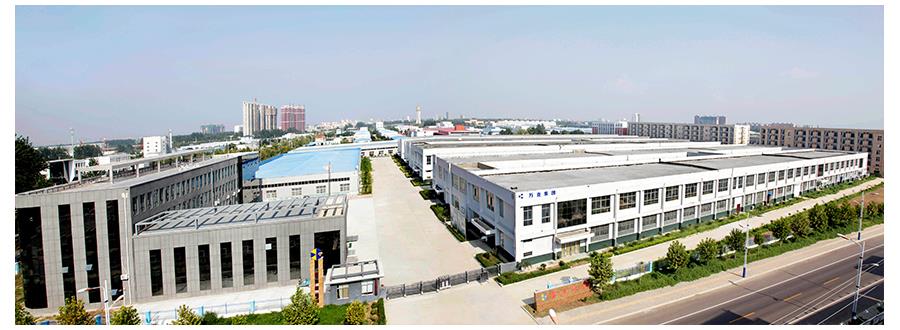Important Factors for Choosing A Superhard Diamond Grinding Wheel
-2023-02-23 17:06:32 -
When choosing a superhard grinding wheel, we often encounter such problems:
What kind of abrasive wheel should I use? diamond? CBN? What kind of bonded grinding wheel is suitable? plating? resin? ceramics? Or metal? What kind of grinding wheel is sharper? What kind of grinding wheel has a longer service life? Does the superhard grinding wheel need to be trimmed? How to trim it? etc…
The three elements of superhard grinding wheel are abrasive, bond and pores. These three elements are an essential part of a superhard grinding wheel. At the same time, these three elements also closely affect the performance of the grinding wheel.
Abrasives are an important factor. When we choose superhard grinding wheels, we are choosing abrasives. Superabrasives are divided into diamond abrasives and cubic boron nitride abrasives (CBN).

Diamond abrasives are known worldwide for their unique hardness. Unparalleled hardness (Mohs hardness = 10, Vickers hardness = 10000), and wear resistance are synonymous with diamond. At the same time, diamond also has excellent thermal conductivity (thermal conductivity = 146.5w/m K)
However, when diamond encounters iron group metals or high temperature (about 700°C), it will also show its fragile side. When diamond is grinding, when it encounters transition metals such as iron, cobalt, nickel, chromium, etc., coupled with the high temperature generated by grinding, a chemical reaction will occur, causing carbon atoms to diffuse into the workpiece to form carbides, so that the grinding wheel loses its grinding force or cause sticky debris.
The hardness of cubic boron nitride abrasive (CBN) (Mohs hardness = 9.7, Vickers hardness = 7500) is second only to diamond, and it has excellent thermal and chemical stability while having high hardness. These two characteristics are the biggest difference between it and diamond. CBN can withstand high temperature of 1300 ℃, and the hardness will not decrease, we call it red hardness. Moreover, CBN has strong chemical inertness and is not easy to react with iron group elements. It is worth mentioning that although the thermal conductivity of CBN (79.54w/m K) is not as good as that of diamond, it is also much higher than that of high-speed steel and cemented carbide, and as the cutting speed increases, the thermal conductivity of CBN also gradually increases . Therefore, when processing materials with high hardness and low thermal conductivity, CBN can exhibit extremely high grinding and cutting performance, and its life is much longer than that of diamond grinding wheels or tools.
It is precisely because of the different physical and chemical properties of diamond and cubic boron nitride that it is necessary to make appropriate choices for different workpiece materials in practical applications.
Therefore, diamond is more suitable for processing hard and brittle materials, non-ferrous metals, non-metallic materials and composite materials, and CBN is more suitable for processing hard and tough materials, ferrous metals.
What kind of abrasive wheel should I use? diamond? CBN? What kind of bonded grinding wheel is suitable? plating? resin? ceramics? Or metal? What kind of grinding wheel is sharper? What kind of grinding wheel has a longer service life? Does the superhard grinding wheel need to be trimmed? How to trim it? etc…
The three elements of superhard grinding wheel are abrasive, bond and pores. These three elements are an essential part of a superhard grinding wheel. At the same time, these three elements also closely affect the performance of the grinding wheel.
Abrasives are an important factor. When we choose superhard grinding wheels, we are choosing abrasives. Superabrasives are divided into diamond abrasives and cubic boron nitride abrasives (CBN).

Diamond abrasives are known worldwide for their unique hardness. Unparalleled hardness (Mohs hardness = 10, Vickers hardness = 10000), and wear resistance are synonymous with diamond. At the same time, diamond also has excellent thermal conductivity (thermal conductivity = 146.5w/m K)
However, when diamond encounters iron group metals or high temperature (about 700°C), it will also show its fragile side. When diamond is grinding, when it encounters transition metals such as iron, cobalt, nickel, chromium, etc., coupled with the high temperature generated by grinding, a chemical reaction will occur, causing carbon atoms to diffuse into the workpiece to form carbides, so that the grinding wheel loses its grinding force or cause sticky debris.
The hardness of cubic boron nitride abrasive (CBN) (Mohs hardness = 9.7, Vickers hardness = 7500) is second only to diamond, and it has excellent thermal and chemical stability while having high hardness. These two characteristics are the biggest difference between it and diamond. CBN can withstand high temperature of 1300 ℃, and the hardness will not decrease, we call it red hardness. Moreover, CBN has strong chemical inertness and is not easy to react with iron group elements. It is worth mentioning that although the thermal conductivity of CBN (79.54w/m K) is not as good as that of diamond, it is also much higher than that of high-speed steel and cemented carbide, and as the cutting speed increases, the thermal conductivity of CBN also gradually increases . Therefore, when processing materials with high hardness and low thermal conductivity, CBN can exhibit extremely high grinding and cutting performance, and its life is much longer than that of diamond grinding wheels or tools.
It is precisely because of the different physical and chemical properties of diamond and cubic boron nitride that it is necessary to make appropriate choices for different workpiece materials in practical applications.
Therefore, diamond is more suitable for processing hard and brittle materials, non-ferrous metals, non-metallic materials and composite materials, and CBN is more suitable for processing hard and tough materials, ferrous metals.
Related News
- Characteristics and Application of Resin Diamond Grinding Disc
- Glass Diamond Drill Bits Revolutionize Precision Drilling in the Glass Industry
- Innovative Diamond Resin Discs Revolutionize Hair Clipper Grinding Efficiency
- Diamond Micropowder Unleashes New Possibilities
- Diamond Powder Revolutionizes Drawing Die Polishing: Unveiling the Ultimate Finishing Solution
- Revolutionizing Gem Polishing with Diamond Micropowder
- Metal Diamond Wheels from HNHONGXIANG
- Diamond Micropowder on the Surface Grinder
- Diamond Micropowder Used in Polishing Liquid
- Glass Diamond Bits
- Classification of Grinder
- Surface Grinding and Surface Grinder









